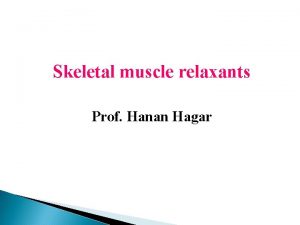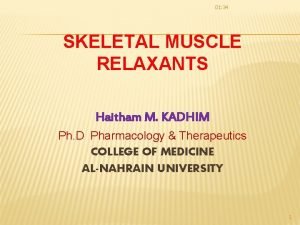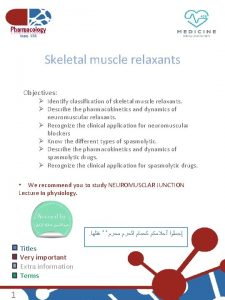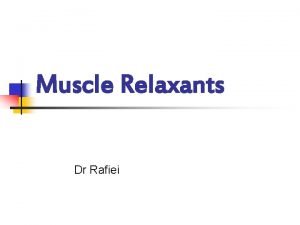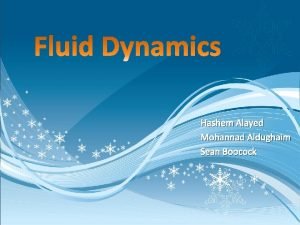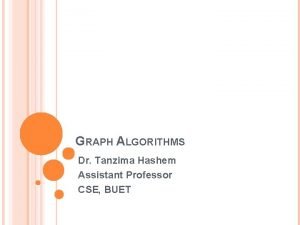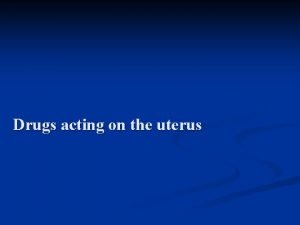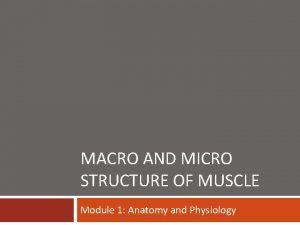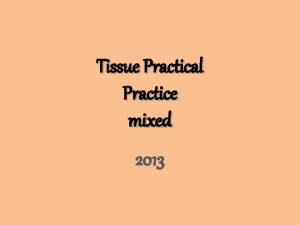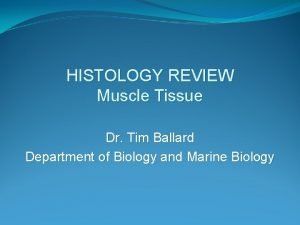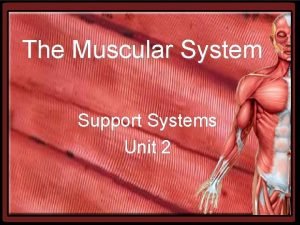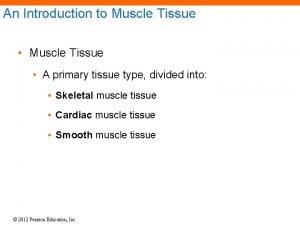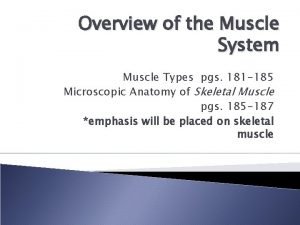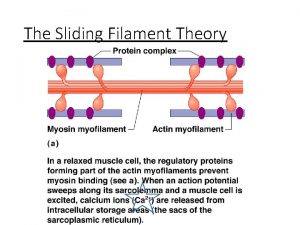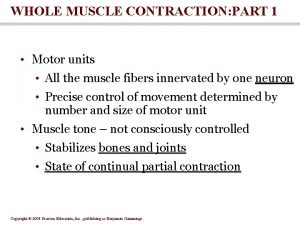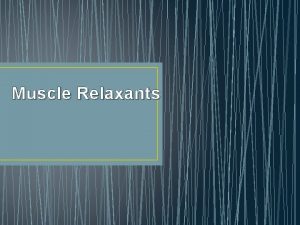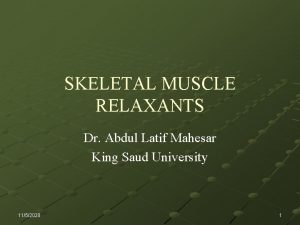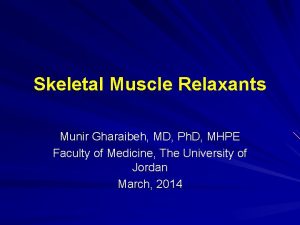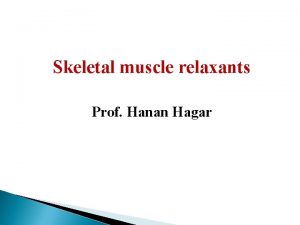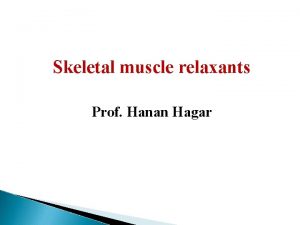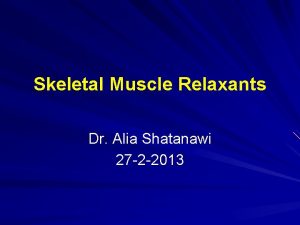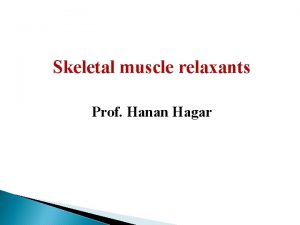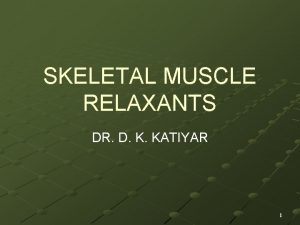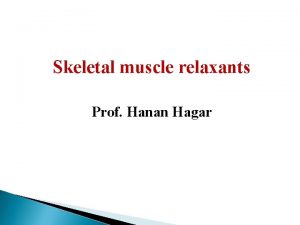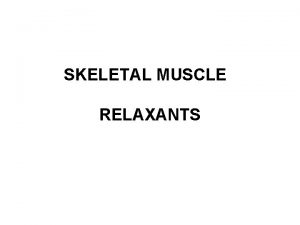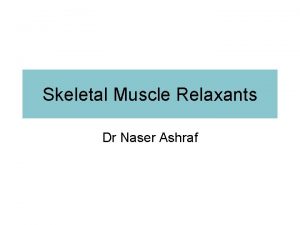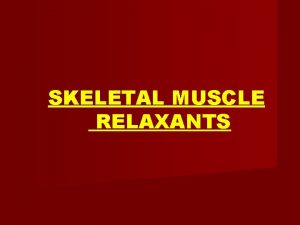1 Skeletal muscle relaxants DR HASHEM MANSOUR Muscle



























- Slides: 27

1 Skeletal muscle relaxants DR. HASHEM MANSOUR

Muscle spasm 2

Introduction q Skeletal muscle relaxants include neuromuscular blockers, spasmolytics, and antispasmodics. q Spasmolytics and antispasmodics are used to treat two conditions: Spasms from peripheral musculoskeletal conditions (antispasmodics) Spasticity from upper motor neuron lesions (spasmolytics). 3

Introduction 4 Spasticity presents as intermittent or sustained involuntary contraction of skeletal muscle, causing stiffness that interferes with mobility and speech. It is characterized by an increase in tonic stretch reflexes and flexor muscle spasms (ie, increased basal muscle tone) together with muscle weakness. It is often associated with spinal injury, cerebral palsy, multiple sclerosis, and stroke.

Treatment Pharmacologic therapy may ameliorate some of the symptoms of spasticity by modifying the stretch reflex arc or by interfering directly with skeletal muscle. 5

Diazepam 6 Its action is mediated in the spinal cord because it is somewhat effective in patients with cord transection. Although diazepam can be used in patients with muscle spasm of almost any origin (including local muscle trauma), it also produces sedation at the doses required to reduce muscle tone. The initial dosage is 4 mg/d, and it is gradually increased to a maximum of 60 mg/d.

Baclofen 7 Baclofen an orally active GABA-mimetic agent and is an agonist at GABAB receptors. Activation of these receptors by baclofen results 1) closure of presynaptic calcium channels, 2) increased postsynaptic K+ conductance and 3) inhibition of dendritic calcium influx channels. The net result is reduced release of excitatory transmitters the CNS. Baclofen may also reduce pain in patients with spasticity, through the spinal cord.

8

Pharmacokinetics It is rapidly and completely absorbed after oral administration and has a plasma half-life of 3– 4 hours. Dosage is started at 15 mg twice daily, increasing as tolerated to 100 mg 9

Side effects Weak 10 or shallow breathing, confusion, hallucinations or seizure (convulsions). Drowsiness, dizziness, weakness, tired feeling, headache, insomnia, nausea, constipation, urinating more often than usual. There are no reports of baclofen directly causing human fetal malformations.

11

TIZANIDINE Tizanidine has been studied for its spasmolytic actions. Tizanidine has significant α 2 -agonist effects, but it reduces spasticity in experimental models at doses that cause few cardiovascular effects. 12

TIZANIDINE 13 Neurophysiologic studies suggest that tizanidine reinforces both presynaptic and postsynaptic inhibition in the cord. It also inhibits nociceptive ﻣﺴﺒﺐ transmission in the spinal dorsal horn. Tizanidine’s actions in the spinal neurons do not induce any changes in intrinsic muscle properties.

14

Side effects Drowsiness, insomnia and hallucinations. Dose-dependent The 15 elevation of liver test drowsiness can be managed by taking the drug at night. Treatment is initiated at 2 mg every 6– 8 hours and can be titrated up to a maximum of 36 mg/d. Dosage must be adjusted in patients with hepatic or renal impairment.

Gabapentin Is 16 an antiepileptic drug that has shown considerable promise as a spasmolytic agent in several studies involving patients with multiple sclerosis. Pregabalin is a newer analog of gabapentin that may also prove useful in relieving painful disorders that involve a muscle spasm component.

BOTULINUM TOXIN 17 Local injection of botulinum toxin has also become a useful treatment for generalized spastic disorders (eg, cerebral palsy). Most clinical studies to date show that the benefits appear to persist for weeks to several months after a single treatment. More recently, FDA approval was granted for treatment of incontinence due to overactive bladder and for chronic migraine.

Adverse effects 18 Include respiratory tract infections, muscle weakness, urinary incontinence, falls, fever, and pain. While immunogenicity is currently of much less concern than in the past, experts still recommend that injections not be administered more frequently than every 3 months.

Orphenadrine Is an anticholinergic drug of the. It is used to treat muscle pain and to help with motor control in Parkinson's disease, but has largely been superseded by newer drugs. 19

Medical use 20 Orphenadrine is used to relieve pain caused by muscle injuries like strains and sprains in combination with rest and physical therapy. Orphenadrine is effective for acute back or neck pain. is used in alleviating motor function symptoms, and appear to help about 20% of people with Parkinson'

Side effects Common 21 side effects include dry mouth, dizziness, drowsiness, upset stomach or vomiting, constipation, urine retention, blurred vision, and headache. Its use in Parkinson's is especially limited by these factors. People with glaucoma, digestive problems such as peptic ulcers or bowel obstruction, or sphincter relaxation disorders, or with enlarged prostate, bladder problems, or myasthenia gravis, should not take this drug

Uses of centrally acting muscle relaxants 22 1. Acute muscle spasms Overstretching of a muscle, sprain, tearing of ligaments and tendons, dislocation, fibrositis, bursitis, etc. cause painful spasm of muscles. 2. Torticollis, lumbago, backache, neuralgias respond in the same way as acute muscle spasms. The Benzodiazepines muscle relaxants are often combined with analgesics.

Uses of centrally acting muscle relaxants 3. 23 Anxiety and tension associated with increased tone of muscles and bruxism (involuntary grinding of teeth during sleep; often stress related) may be benefited.

Uses of centrally acting muscle relaxants 4. Spastic neurological diseases like hemiplegia, paraplegia, spinal injuries, multiple sclerosis, and cerebral palsy are somewhat benefited by baclofen, diazepam, tizanidine. 6. Orthopaedic manipulations may be performed under the influence of diazepam. 24

Implication in physiotherapy Skeletal 25 muscle relaxants are very important in surgery and used in intubation. Also it is very important in P. T since it facilitate exercise program through reduction of muscle strain.

Implication in physiotherapy The physiotherapist should not perform exercise among patient with muscle spam. The P. T should never perform exercise among patients on benzodiazepine or baclofen unless they are fully alert and cooperative due to their side effects (drowsy). 26

Implication in physiotherapy The 27 P. T can precipitate muscle strain if he was not aware about exchange of position or exchange from hot bath to cool bath. Even though P. T can educate the patient how to use these medication in the proper way to decrease the danger of falling.
 Skeletal muscle relaxants classification
Skeletal muscle relaxants classification Centrally acting skeletal muscle relaxants
Centrally acting skeletal muscle relaxants Skeletal muscle relaxants classification
Skeletal muscle relaxants classification Dantrolene
Dantrolene Non depolarizing muscle relaxant classification
Non depolarizing muscle relaxant classification Chlorzoxone
Chlorzoxone Action of muscle relaxants
Action of muscle relaxants Hashem ahmadzadeh
Hashem ahmadzadeh Mohannad rachid
Mohannad rachid Tanzima hashem
Tanzima hashem Muscle refractory period
Muscle refractory period Uterine stimulants drugs
Uterine stimulants drugs Dorsifelxion
Dorsifelxion Micro muscles
Micro muscles L
L What tissue is this
What tissue is this Skeletal muscle tissue
Skeletal muscle tissue Comparison of skeletal cardiac and smooth muscle
Comparison of skeletal cardiac and smooth muscle Purpose of skeletal muscle
Purpose of skeletal muscle Skeletal muscle origin
Skeletal muscle origin Hierarchy of muscle organization
Hierarchy of muscle organization Skeletal muscle
Skeletal muscle Comparison of skeletal cardiac and smooth muscle
Comparison of skeletal cardiac and smooth muscle Somatic nervous system
Somatic nervous system 5 golden rules of skeletal muscle activity
5 golden rules of skeletal muscle activity Endo peri epi
Endo peri epi Myopathy
Myopathy Nerve supply skeletal muscle
Nerve supply skeletal muscle

